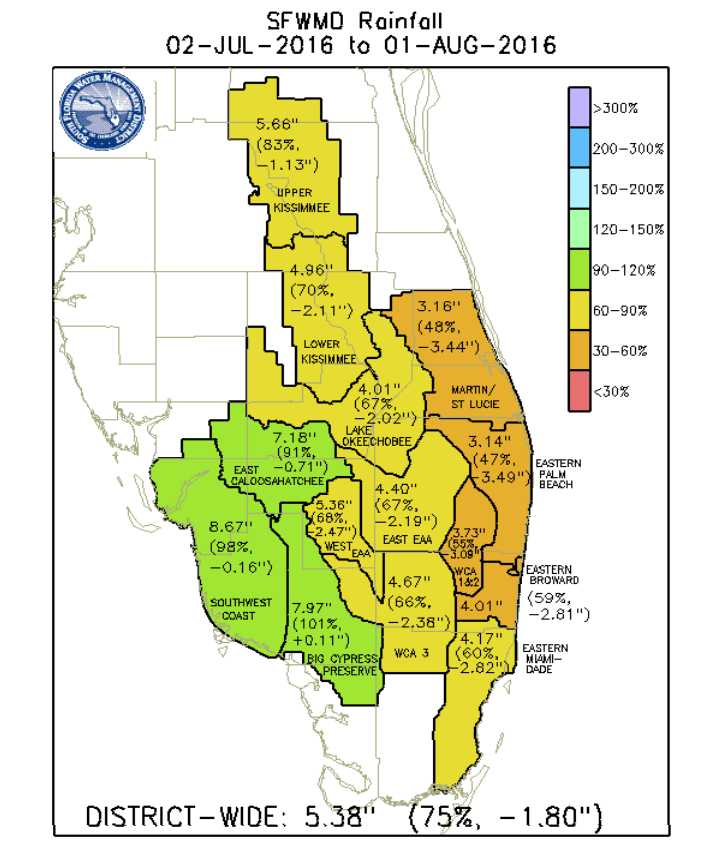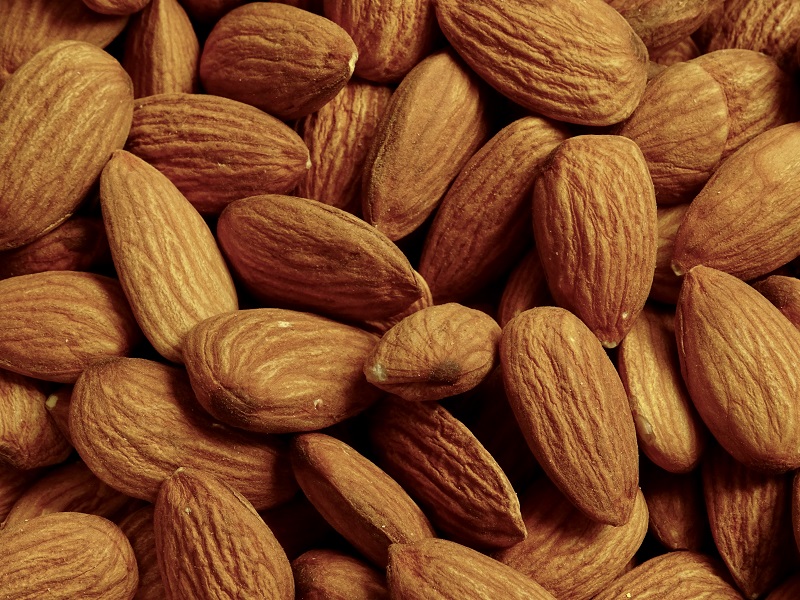Topsy-Turvy Weather Trend Continues In South Florida
In South Florida this year, the weather seems to be a bit confused. The dry season was anything but. And so far, the wet season – in most parts of the region – could barely be considered moist.
According to South Florida Water Management District (SFWMD) officials, rainfall across the region was well below average in July, leading to the 10th driest July on record. A total of 5.38 inches of rain fell Districtwide, representing 75% of average, or 1.8 inches below average.
Other parts of the state also are experiencing drier-than-normal conditions as well as above-average temperatures.
The driest parts of the District’s 16-county region were in the eastern coastal areas of Palm Beach and Broward counties. Those basins received between 47% and 60% of their average rainfall for July. The eastern area of Palm Beach County was the driest with a 3.49-inch rainfall shortfall.

Easterly steering winds pushed storms that did develop across the state during the early part of July, accounting for the much drier conditions along the eastern coastal areas and average rainfall experienced in the western basins. The Southwest Coast, East Caloosahatchee, and Big Cypress Preserve basins received close to the average amount of rainfall for July due to these steering winds.
Because of unprecedented rainfall for the first half of 2016, it has still been the 10th wettest year on record, according to District meteorologists. A significant El Niño climate phase was implicated in numerous weather records set across the globe during the past year. While El Niño has all but faded, there is a chance its climatic counterpart, La Niña, could take its place.
The below average rainfall proved to be beneficial to the SFWMD’s ongoing efforts to treat and move more water south from Lake Okeechobee to Everglades National Park. This endeavor is especially important in the wake of the algal bloom disaster that deeply impacted large portions of the Treasure Coast.
The dry July created opportunity to discharge water from treatment areas into the water conservation areas. In all, the District moved 33,300 acre-feet of water from Lake Okeechobee south to the treatment areas and flow equalization basins in July, far more than the 22,600 moved in May and June combined during heavier local rainfall.
Other rainfall totals included:
- Lake Okeechobee recorded 4.01 inches of direct rainfall, representing 67% of average, or 2.02 inches below average.
- Martin and St. Lucie counties received 3.16 inches of rain, representing 48% of average, or 3.44 inches below average.
- Rainfall totals in the Water Conservation Areas (WCAs) were below average. WCAs 1 and 2 received 3,73 inches of rain, representing 55% of average, or 3.09 inches below average. WCA 3 received 4.67 inches of rain, representing 67% of average, or 2.38 inches below average.
- The Upper and Lower Kissimmee basins were below their averages for the month. The Upper Kissimmee basin received 5.66 inches of rain, representing 83% of average, or 1.13 inches below average. The Lower Kissimmee basin received 4.96 inches of rain, representing 70% of average, or 2.11 inches below average.









